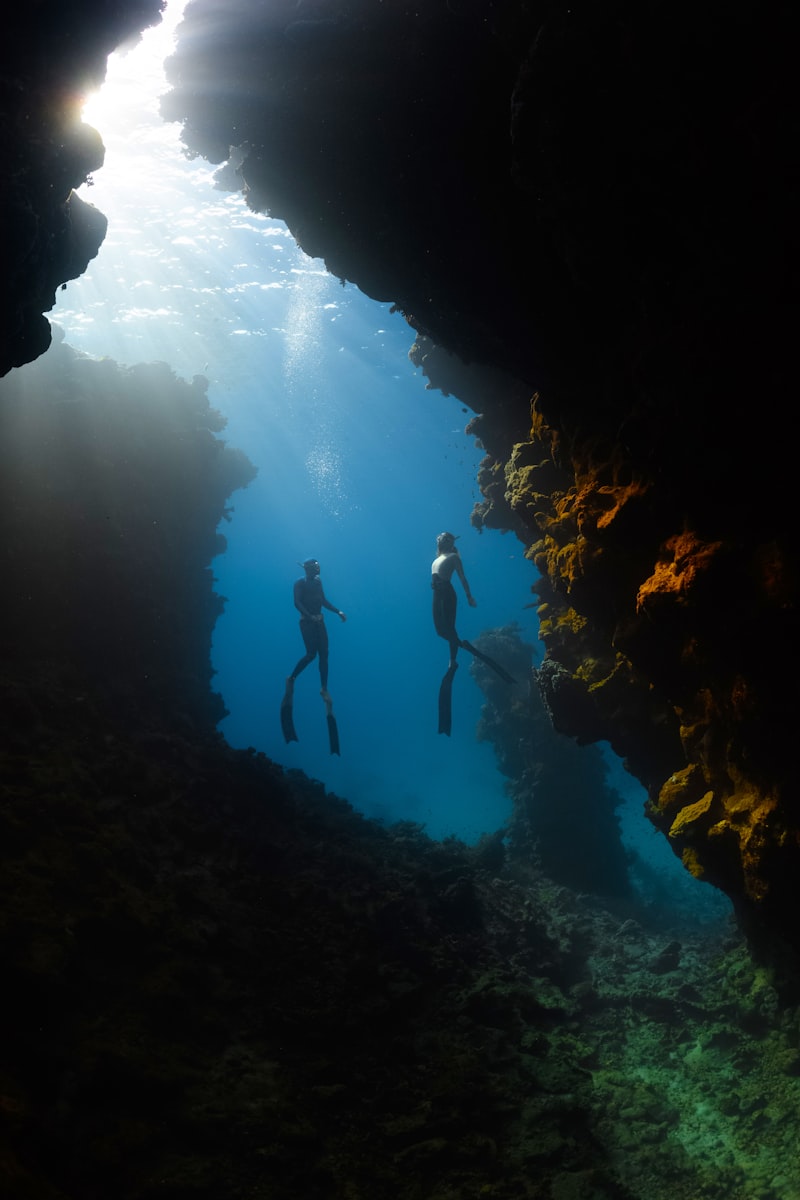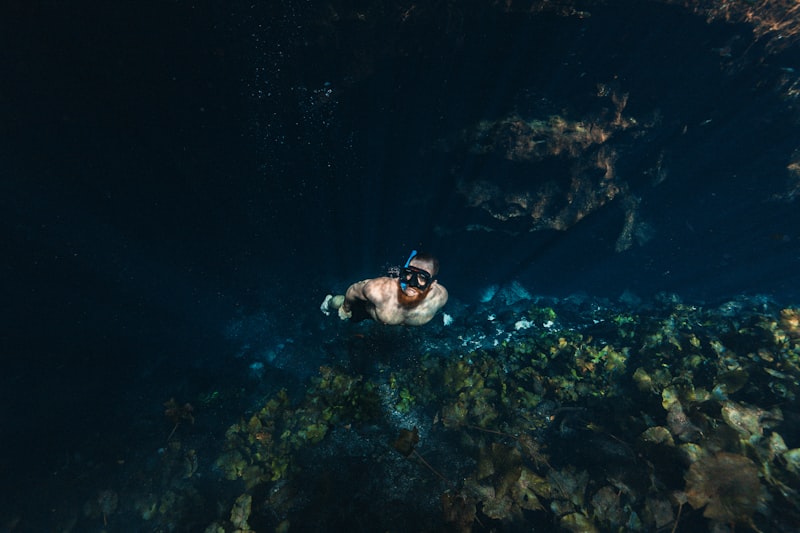Have you ever wondered what lies beneath the vast expanses of our oceans? Exploring the deep sea is like delving into an alien world right here on Earth. It’s a realm where sunlight struggles to penetrate, and strange creatures thrive in the darkness. Let’s uncover the mysteries of the deep together.


The deep sea starts where the sunlight ends, plunging into darkness thousands of meters below the surface. This mysterious zone remains largely unexplored, holding secrets that scientists are only beginning to unravel. Imagine descending into a world where the pressure can crush a submarine and where temperatures near freezing point.
One of the most fascinating aspects of exploring the deep is discovering the bizarre creatures that call it home. From the ghostly shapes of anglerfish to the translucent bodies of comb jellies, these organisms have evolved unique adaptations to survive in extreme conditions. Some produce their own light through bioluminescence, creating a mesmerizing display in the blackness.
Scientists use specialized technology like remotely operated vehicles (ROVs) and manned submersibles to study this hidden world. These tools allow them to collect samples, take photographs, and record video footage of deep-sea life. Each expedition brings new surprises and adds to our understanding of life on Earth.
Exploring the deep sea isn’t just about biology; it also holds clues to Earth’s history and future. Deep-sea sediments preserve records of past climates and geological events, offering insights into how our planet has changed over millions of years.
Join us as we dive into the mysteries of the deep sea, where every journey reveals something extraordinary. From strange creatures to scientific breakthroughs, the deep continues to captivate and inspire us.
Unveiling the Abyss: Journey into the Depths of the Ocean
Imagine descending through layers of darkness, where sunlight fades into obscurity, and the pressure becomes immense. Here, life takes on a surreal form, adapted to survive in conditions that would crush most creatures. Strange fish with bioluminescent features flicker like stars in the darkness, creating an otherworldly spectacle.
One of the most astounding sights in the abyss is the hydrothermal vents, where superheated water erupts from the ocean floor. These vents support vibrant ecosystems teeming with life forms found nowhere else on Earth. Bizarre tube worms and giant clams thrive in this harsh environment, sustained by chemosynthesis rather than sunlight.
The journey into the deep ocean isn’t just about witnessing alien landscapes—it’s about unraveling Earth’s history. Sediment cores retrieved from the seabed provide a record of climate change spanning millions of years, offering invaluable insights into our planet’s past and future.
Yet, with all its wonders, the abyss also holds challenges and dangers. Exploring these depths requires specialized equipment and rigorous training to mitigate risks. Even with modern technology, much of the ocean’s depths remain unexplored, leaving vast expanses waiting to be discovered.

As we continue to unveil the abyss, each expedition brings us closer to understanding the complexities of our planet and the interconnectedness of life. The journey into the depths of the ocean is not merely a scientific endeavor but a testament to human curiosity and the relentless pursuit of knowledge.
What lies beneath the waves continues to intrigue and inspire us, urging us to delve deeper into the unknown, where every dive promises a new revelation and the possibility of encountering something truly extraordinary.
Secrets of the Deep: Discovering Hidden Treasures Beneath the Waves
Beneath the tranquil surface of our oceans lies a world brimming with mysteries and marvels, waiting to be uncovered. The secrets of the deep sea have fascinated explorers and scientists alike for centuries, drawing them into a realm where ancient relics and undiscovered species coexist in a delicate balance.
Imagine diving into the abyss, surrounded by an otherworldly silence broken only by the gentle hum of marine life. Here, amidst the sapphire blues and emerald greens, lie shipwrecks that tell tales of bygone eras. Each sunken vessel is a time capsule, preserving history in its barnacle-covered hull. These wrecks not only offer a glimpse into the past but also serve as artificial reefs, teeming with vibrant corals and schools of fish.
But the treasures of the deep sea extend far beyond sunken ships. In the abyssal plains, where sunlight fails to penetrate, peculiar creatures thrive in darkness. Bioluminescent organisms cast an ethereal glow, illuminating the eerie beauty of this uncharted realm. Deep-sea vents, spewing mineral-rich fluids from the Earth’s crust, nurture communities of life that defy our understanding of biology.
The quest to unlock these secrets drives marine biologists and explorers to push the boundaries of discovery. Armed with advanced technology, they delve deeper than ever before, unveiling new species and ecosystems that challenge our perception of life on Earth. From the mysterious giant squid to the elusive coelacanth, each discovery sparks a sense of wonder and fuels our desire to protect these fragile environments.
As we continue to explore the secrets of the deep, we must also confront the challenges posed by human activities. Pollution, overfishing, and climate change threaten these delicate ecosystems, underscoring the urgency of conservation efforts. By understanding and respecting the treasures hidden beneath the waves, we can ensure that future generations inherit a world where the mysteries of the deep sea continue to inspire awe and reverence.
Beyond Sunlight: Life Forms and Mysteries in the Deep Sea
Imagine descending into the darkness, where sunlight fades into a faint glimmer and the pressure mounts to unimaginable levels. Yet, life thrives here in ways that defy expectations. One of the most intriguing aspects of deep-sea life forms is their adaptation to extreme conditions. Creatures like the anglerfish, with its bioluminescent lure dangling in front of its jaws, or the gulper eel, with its expandable stomach to engulf prey much larger than itself, are just a glimpse into the astonishing adaptations that have evolved in this harsh environment.
The deep sea is not just a static landscape but a dynamic realm where surprising interactions and behaviors occur. Take for instance the hydrothermal vents, where superheated water laden with minerals gushes from beneath the Earth’s crust. These vents support thriving ecosystems around them, fueled not by sunlight but by chemosynthesis—a process where bacteria convert minerals into energy.
Moreover, the deep sea holds mysteries that challenge our understanding of life itself. Scientists have discovered organisms that thrive in complete darkness, feeding off chemical energy rather than sunlight. These discoveries have profound implications for astrobiology and our quest to understand the potential for life on other planets.
In essence, the deep sea is a testament to the resilience and adaptability of life. It reminds us that even in the most extreme and inhospitable environments, nature finds a way to flourish. As we continue to explore and uncover its secrets, the mysteries of the deep sea promise to inspire and astonish us for generations to come.
Exploring the Unknown: Deep-Sea Expeditions and Their Revelations
Imagine descending thousands of meters beneath the surface, where sunlight barely penetrates and pressure reaches crushing levels. It’s a realm where life exists in forms unimaginable to us, adapted to extreme conditions that challenge our understanding of biology. Through these expeditions, scientists have discovered new species, from bioluminescent creatures that glow in the dark to bizarre organisms thriving near hydrothermal vents.
Moreover, deep-sea expeditions contribute crucial insights into Earth’s history and geology. By studying sediment layers and rock formations at the ocean floor, researchers can reconstruct ancient climates and track geological events that shaped continents. These findings not only enrich our knowledge of the past but also offer valuable clues for understanding future environmental changes.
The technological advancements driving these expeditions are equally remarkable. Remotely operated vehicles (ROVs) equipped with high-definition cameras and sampling tools enable scientists to explore depths previously inaccessible. These tools capture stunning images and videos that bring the mysterious deep-sea landscapes to life, captivating audiences worldwide.
In essence, deep-sea expeditions are more than scientific endeavors; they are voyages of human curiosity and discovery. They push the boundaries of what we know about our planet and inspire new generations to explore and protect the oceans. As we continue to uncover the secrets hidden beneath the waves, each expedition brings us closer to understanding the vast and dynamic world beneath the surface.
Frequently Asked Questions
What are the major challenges of deep-sea exploration?
Discover the major challenges of deep-sea exploration, from extreme pressures and temperatures to navigating vast, uncharted territories. Learn about technological limitations and the difficulty of conducting research in remote, inhospitable environments.
Why is deep-sea exploration important for understanding climate change?
Deep-sea exploration is crucial for understanding climate change because the ocean plays a significant role in regulating Earth’s climate. By studying deep-sea ecosystems and ocean currents, scientists can better comprehend how carbon is stored and circulated, influencing global temperatures and weather patterns.
What technology is used for exploring the deep ocean?
Discover the technology used for exploring the deep ocean. Learn about the advanced tools and equipment, such as remotely operated vehicles (ROVs), autonomous underwater vehicles (AUVs), and manned submersibles, that enable scientists and researchers to explore and study the depths of the ocean.
What are some fascinating discoveries made during deep-sea expeditions?
Explore intriguing discoveries from deep-sea expeditions, revealing new species, ancient shipwrecks, and geothermal vents. These missions unveil the mysteries of underwater ecosystems and provide insights into Earth’s history.
How do scientists study deep-sea creatures and ecosystems?
Learn how scientists study deep-sea creatures and ecosystems with our concise FAQ. Discover the methods they use to explore these mysterious environments and understand their unique adaptations.


